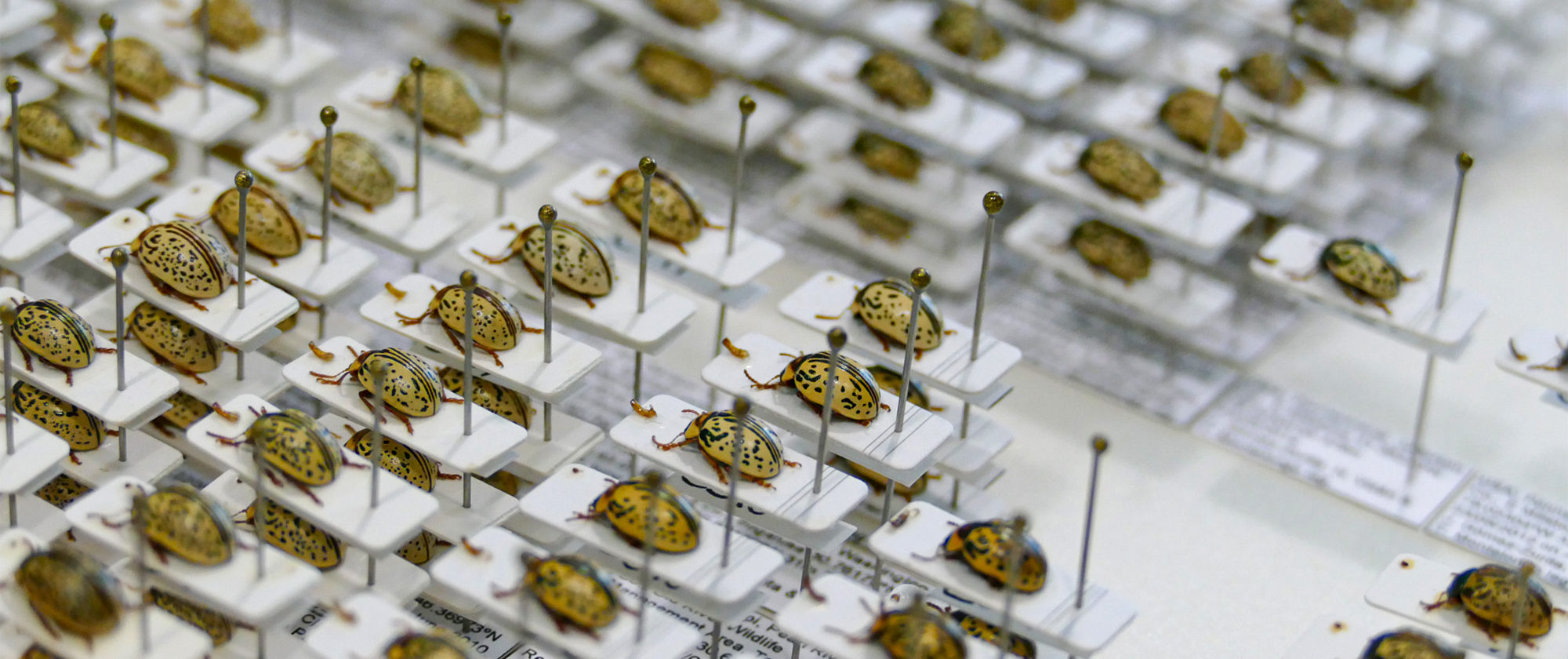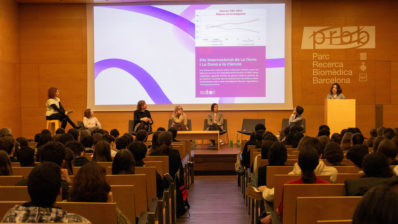Jesús Gómez-Zurita Frau, researcher at the Institute for Evolutionary Biology (IBE: CSIC-UPF), has recently published a study about the role of an endosymbiont bacteria, Wolbachia, in the evolution of Calligrapha beetles‘ unisexuality. In this interview, the scientist tells us about the curious relationship between both organisms.

Tell us about the beetles you study…
It is the American beetle genus Calligrapha. It includes several species, many of which are unisexual.
Do you mean they reproduce without males?
Exactly. They are species made up exclusively of female organisms that, through a process known as parthenogenesis, lay eggs from which only female offspring develop.
And how is this explained, evolutionarily speaking?
This is the question that I have been trying to answer for many years. Our research has shown that each of these unisexual species is the evolutionary product of hybridization between two, or in some cases up to three, different species.
Interspecific hybridization typically results in infertile offspring due to genomic imbalances. But if it coincides with another mechanism that compensates for such imbalances, like genomic duplication, reproductive alternatives may occur, as we think it happened to some unisexual Calligrapha species, which are tetraploids (that is, with the double amount of DNA than the others).
So hybridization between two species linked to a genome duplication could explain the emergence of these unisexual species…
Not quite. Although interspecific hybridization is a necessary condition for the origin of unisexuality in most animals that have been studied, it is not a factor that explains on its own this evolutionary transition in the reproductive mechanism of these species.
Moreover, in the case of Calligrapha, another result we have known for a long time is worth considering: despite their independent origin, all unisexual species share a common ancestor for their mitochondrial DNA. In other words, the history of nuclear genes in unisexual species clearly shows their disparate origins, whereas that of mitochondrial genes suggests that they have a common origin — or that there is some selective process that unifies this genome beyond the evolutionary history of the species.
Different origins of nuclear genes, but a single origin of mitochondrial genes? What a mess!
This paradox was precisely the one that made us hypothesize there must be some factor beyond interspecific hybridization that explained unisexuality in Calligrapha, and this factor must also have an influence on the evolutionary history of mitochondrial DNA in these species.
Taking all these into account, the suspect number 1 could only be Wolbachia, an insects and nematodes endosymbiont bacteria, known to produce these effects in a large number of organisms.
Why was Wolbachia the main suspect?
The first thing that is important to keep in mind about the interaction between the bacteria and its host is that only female beetles are able to transmit the infection to their offspring. The bacteria live in the cells cytoplasm, within the mitochondria, where they coexist with the mitochondrial genome. It explains why there is such a strong link between Wolbachia transmission and mitochondrial DNA, since the mitochondrial DNA is exclusively maternal as well — the sperm mitochondria are concentrated at the base of the flagella, and this part is located outside the zygote when fertilization occurs.
Because Wolbachia relies exclusively on females for its transmission, it has selected a number of strategies to enhance the effectiveness of this transmission, usually at the expense of males, which from their perspective are a hindrance.
Can you tell us some?
There are up to four ways in which Wolbachia influences the reproduction of its hosts, and are generally based on the removal of this hindrance, that is, the males.
- One is the process known as cytoplasmic incompatibility, which determines that Wolbachia-infected males are able to sterilize uninfected females with which they mate, giving a numerical advantage to the offspring of the females that do carry the bacteria.
- Another mechanism used by bacteria is to influence the development of embryos destined to be male by feminizing them, and thus making them suitable vehicles for transmission
- A third mechanism is directly killing the male embryos to eliminate the “problem”.
- And lastly, the bacterium can induce the processes required for the development of unfertilized eggs, eggs that will give rise to females that will be able to continue to reproduce in this way while carrying the endosymbiont bacteria; in other words, they can induce parthenogenesis.
How selfish this Wolbachia!
Well, the unisexuality of the host is led by the bacteria, which manipulates its reproduction for its own benefit, and it can be seen as selfish. But there is evidence that the bacteria can also positively contribute to its host, such as by protecting it against other infections, particularly viral infections, by helping embryonic development or by providing some nutrients to the cells.
“Wolbachia bacteria uses a number of strategies to manipulate beetles reproduction to its own benefit”
And what have been the main results of this latest study? Is Wolbachia the reason of the unisexuality in these beetles?
In our study we found two important results regarding the interaction of these organisms:
- Wolbachia infections are very common among Calligrapha, with almost 85% of specimens studied being positive for the presence of this bacteria, regardless of being bisexual or unisexual species.
- We identified three highly differentiated strains of the bacteria (wCallA, wCallB and wCallC) and found that double infections predominate, that is, when an individual from Calligrapha carried Wolbachia, they were usually from two of the strains, being always wCallA one of them. The other two strains do not coexist in any individual and are in fact geographically separated.
But given the ubiquity of endosymbionts in any species of Calligrapha, regardless of their reproductive mode, we have no evidence linking Wolbachia infection to unisexuality in Calligrapha.
It must be said that, although Wolbachia is one of the main reproduction-manipulating microorganisms, it is not the only one, and maybe another organism may have the answers about unisexuality in Calligrapha. In the meantime, it’s time to keep investigating!







